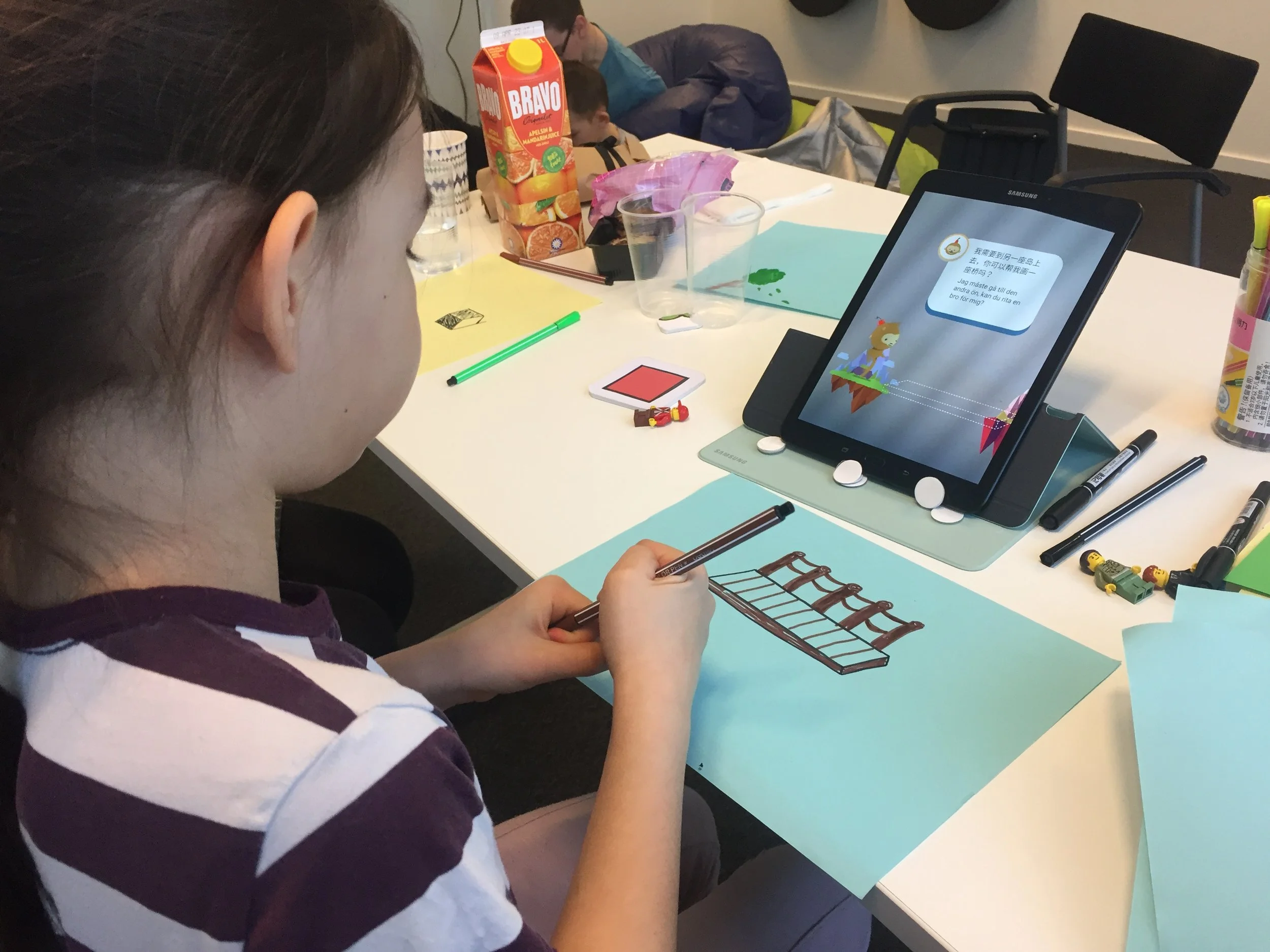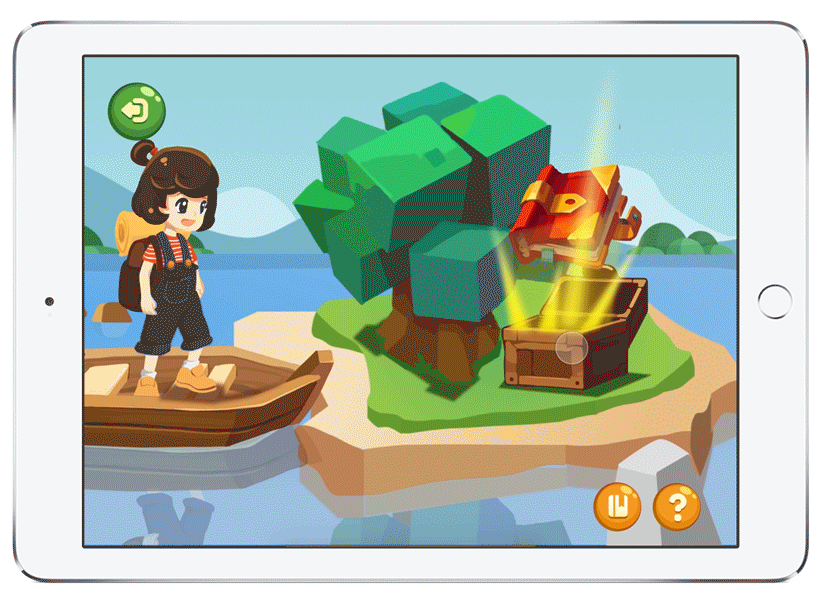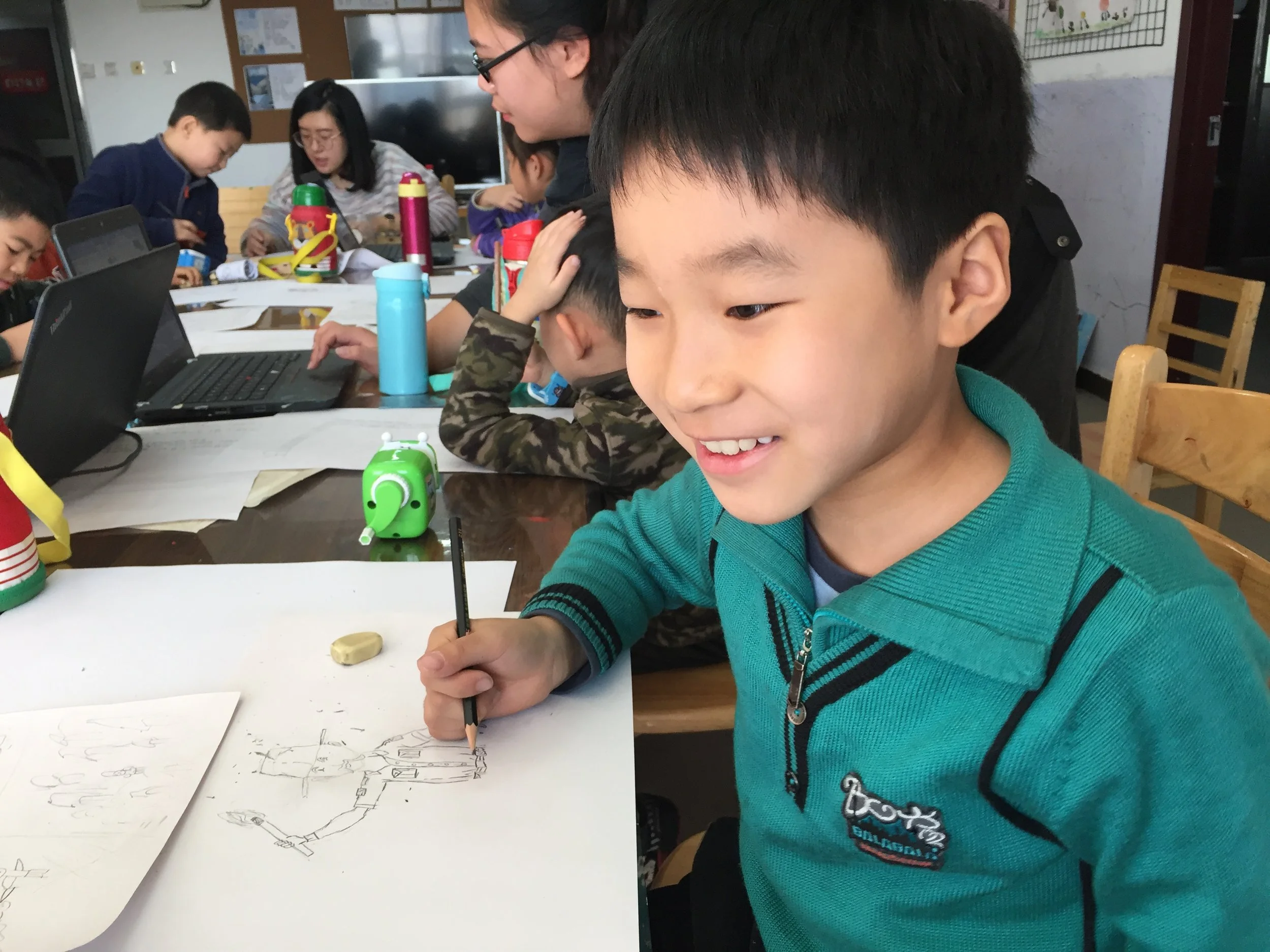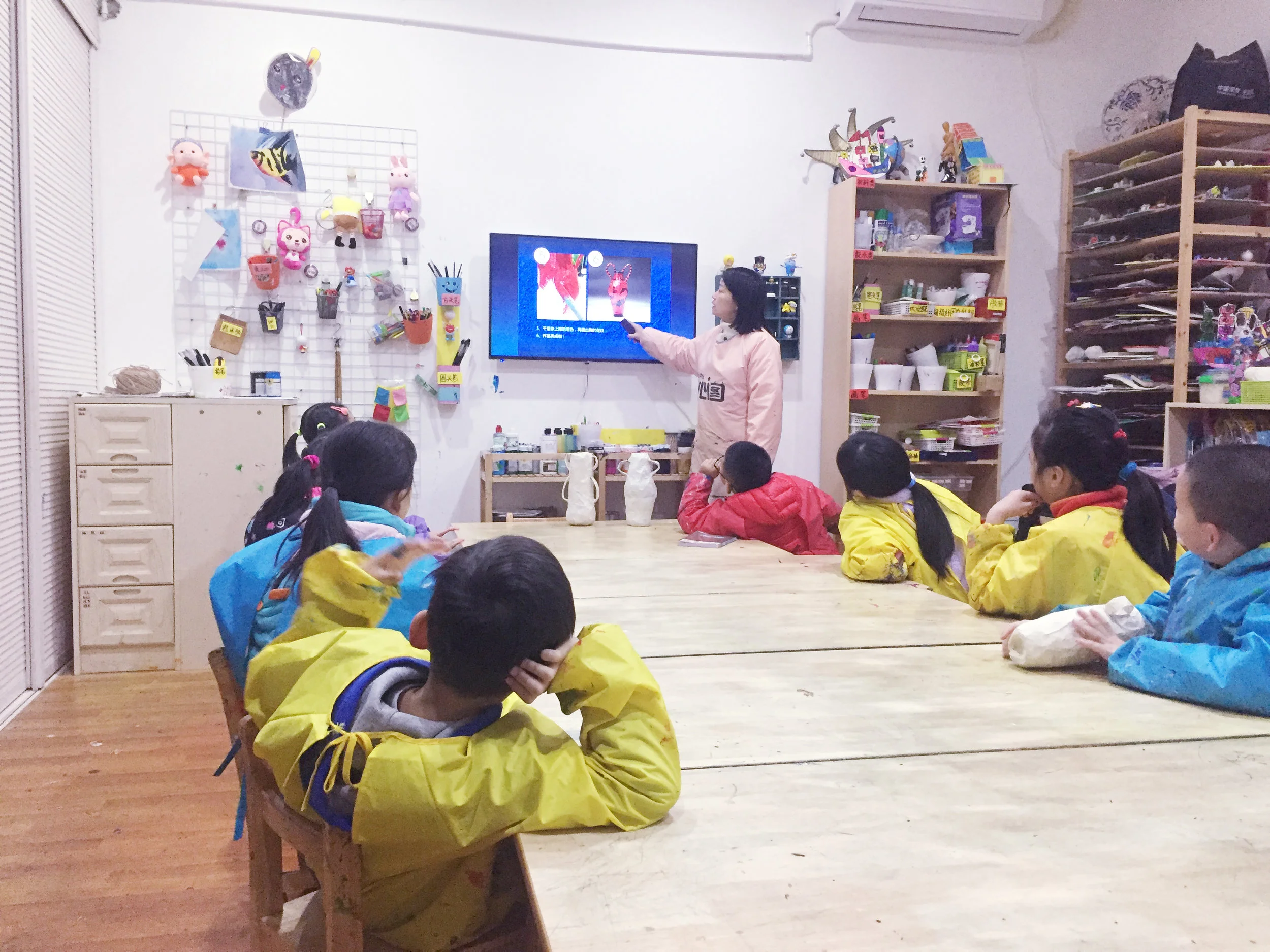
INTRODUCTION
My thesis project ’Artventure’ is a learning platform for kids that uses a combination of traditional visual art learning activities with an augmented reality technology. It encourages kids to practice visual art skills, meanwhile having fun and developing their creativity. Kids can directly use their drawings in the game to influence the virtual characters and their story. It provides both intrinsic and extrinsic engagement, leading to learning through play.
Duration and time: The project was conducted at Umea Institute of Design from Jan 2018 for 20 weeks
DESIGN QUESTION
How could we design a visual art learning experience to engage children for long-term practice and encourage their persistence?
PROJECT FOCUS
Designing a learning experience that combines digital play and physical activities that:
Encourage long-term practice
Engage children to keep practicing visual art for long period of time
Enable learning through playing
Enable children to learn visual art theory meanwhile having fun and developing their creativity
Support along the journey
Giving children the support along their entire learning journey
FINAL CONCEPT





DIGITAL AND PHYSICAL TOUCHPOINT
There are three different touch points including: an IPad game, a tool card package, and AR experience.
IPad Game
Tool Card Package
Augmented Reality Experience
IPad Game
Connect different levels
It provides the curriculum and connects the different level of classes which children could follow.
Teaching theory in interactive ways
Children could play with the theory and explore the theory by using the magical tool card and AR experience.
Learning theory along the way of playing
Children learn the visual art theory along the way of playing. The theory is a part of the game story.
Giving drawing missions by game characters
There are different characters in the game, they encourage children to keep practicing by giving them the drawing missions
Tool Card Package
The design is keeping the traditional physical drawing activities, providing the tool card package with the cards that children could draw on that. It helps to encourage children to keep practicing in a way that is good for their development.
AR Experience
The AR experience is connecting the digital game and physical drawing activities. Children can directly use their drawing in the game and influence the virtual characters and story lines.
THE CURRICULUM OVERVIEW
There are two types of experience in the design: the experience of long-term curriculum and the experience of single classes. The curriculum design is based on the K-12th the art learning standard in the USA. The experience of the single classes is based on the learning model: theory- practice- reflection. Keep the traditional drawing activities and add the digital touch point at the introduction and feedback parts.
CLASS IN DETAILS
There are 3 classes are designed as the hero moments for showing how the concept works. The onboarding is the introduction to the game, the first class is learning how to draw cubes in perspective, and the second class is learning how to draw cones in perspective.
Initial Research
Interviews/ Workshops/ Participatory Observations

To understand the current visual art education and kid’s engagement in the visual art context, I set up a series of research trips combined with the observations and contextual inquiries. The research was conducted in both China and Sweden.
INTERVIEWS WITH DIFFERENT STAKEHOLDERS
For my initial research, I interviewed over 17 people consisting of parents, visual art teachers, and experts. It helped me to better understand the current visual art education and the way parents and teachers are trying to engage kids in the educational context.
Indepth interviews for concrete stories
PARTICIPATORY OBSERVATION
I participated in 2 art workshops in Sweden and visited 2 different extra art schools in China. At there, I played a role as a teacher to create art together with kids. It helped me to understand the interaction between adults and kids and the interaction between the kids and their activities.
Being in the classroom and playing the role as a teacher
Trying existing game with kids
2 BIG INSIGHTS
Creativity vs Technical skills
When kids start to learn technical skills, there are more limitations and it is not as fun as before. There is a gap between creative classes and technical skill learning.
The ‘critical time’
Around 10 years old, kids start to be more critical of their artwork. They want to achieve realism and have higher expectations of their work than their younger peers.
Ideation
Workshop with Kids/ Co-creation with Educators/ Probes

IDEATION AND CO-CREATION
Kids Workshop
The workshop's focus was on exploring how kids perceive and engage with different mediums to do arts and to learn and what tactics can be used to create the engagement that could encourage kids to be more focus and motivated.
Stake-holders Workshop
In the stakeholder's workshop, the participants were asked to brainstorm on three design questions, in which they were given a persona or tactics to explore the possible concepts and scenarios.
CONCEPT VALIDATION
Based on the ideas from the workshops, I build the probes to communicate the early concepts. After that, 3 in-depth co-creation interviews were conducted. The aim of the interviews was to get the educators’ insights on whether the design can be useful in teaching and the engagement could encourage kids to draw more often.
Prototype and User Test
Functional Prototypes/ User Testing
The prototypes are based on the learning model: theory- practice- reflection, and started from the experience of the single classes. There are three different aspects for achieving three different learning goals in the prototypes.
INTERACTIVE INTRODUCTION
In the prototype, I was trying to explore how we could make the theory learning more interactive. Children are no longer just sitting and listening, they could also explore the theory even play with the theory by themselves.
Prototype for learning how to draw the movement
Prototype for learning the differences between squares and cubes
INFLUENCE THE STORY & INSTANT FEEDBACK
The design is trying to keep the traditional physical drawing, children get the mission while they are playing the game, but to finish the mission, they would need to draw on the paper and would use what they draw to influence the game by using the AR experience.
AR experiences to engage kids to draw a cube
Using the artworks to influence the narrative
USER TEST
I conducted qualitative user test with four kids in the focusing age group, 2 boys and 2 girls. All the kids show strong interest in this new format of learning and get very intrigued by the magical 3D content that they explore. What they love most is that they can interact with the game by the magical card and they can use their artworks to influence the story. Merging virtual and reality(AR experience) excites kids and engage them to draw on the paper.





Concept Execution
Game Character Design/ UI/ Functional Prototype/ Exhibition












































